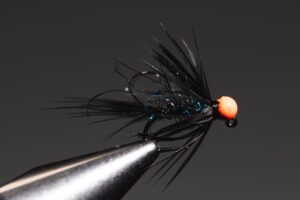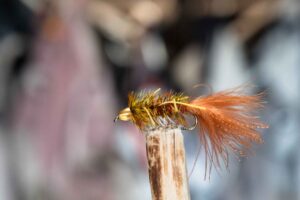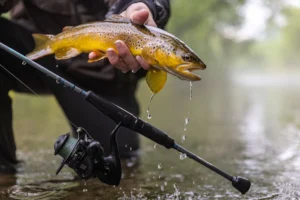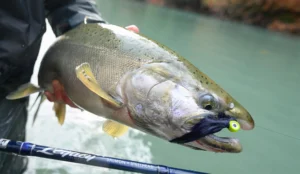Catching big trout in small streams is one of the most rewarding challenges in freshwater fishing. These fish didn’t get big by being careless—they’re smart, easily spooked, and know every inch of their territory. But with the right techniques, gear, and mindset, you can outwit even the wariest trout hiding in tight quarters. Here’s how to approach small stream fishing if you’re chasing lunkers in skinny water.
1. Stealth is Everything
In small streams, trout can see you coming long before you see them. Approach slowly, wear natural colors, and keep a low profile. Crouch or kneel when necessary, and avoid casting shadows over the water. Consider fishing upstream so your presence doesn’t drift into the trout’s feeding lane.
2. Downsize Your Gear
You don’t need a heavy setup to fish small water. Use a light or ultralight spinning rod (around 5-6 feet) or a 2-4 weight fly rod. Lighter gear helps you present baits or flies delicately, which is essential when dealing with spooky fish in clear, shallow water.
3. Match the Hatch (or the Forage)
Big trout didn’t get big by eating fluff—they’re efficient predators. Insects, small minnows, and crustaceans make up the bulk of their diet in small streams. Fly anglers should pay attention to local hatches, while spin anglers should consider inline spinners, micro-jigs, or small soft plastics that mimic natural prey.
4. Focus on Prime Lies
Big trout don’t just hang out anywhere. They take the best spots: deep pools, undercut banks, fallen trees, or tight bends where food flows to them and they feel secure. Look for structure and cover, especially in slower water with overhead protection.
5. Fish Low Light or After Rain
Morning, evening, and overcast days offer the best chances to fool a big trout in a small stream. Rain events can also bring opportunity—muddy water gives you more room for error, and big trout often come out to feed aggressively during or after a storm.
6. Be Patient, But Precise
Your first cast is your best shot. Make it count. Fish the entire run methodically and don’t rush. Often, big trout will sit motionless unless presented with a near-perfect drift or retrieve. Slow it down, be accurate, and work the water thoroughly.
Final Thoughts
Fishing small streams for big trout requires finesse, patience, and an understanding of trout behavior. It’s not about casting the farthest or using the fanciest gear—it’s about blending in, reading the water, and making that one perfect presentation. The reward? A monster trout in a creek you could jump across.







